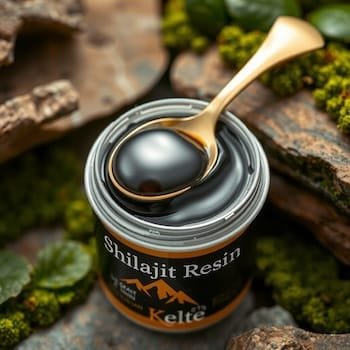Does Shilajit Work? Unraveling the Truth About This Ancient Remedy
Shilajit, an ancient remedy with roots deeply embedded in Ayurvedic medicine, has been making waves in the modern wellness scene. Harvested from the rocks of the Himalayas, this sticky substance is touted as a panacea, offering a plethora of health benefits. But does shilajit really work? Let’s dive into the science and explore what the experts have to say.
Before we delve into the specifics, let’s clarify what shilajit actually is. Shilajit is composed of dozens of minerals and other nutrients, with fulvic acid being its most notable component. This powerful compound is thought to be responsible for many of shilajit’s alleged benefits.
The Origin and History of Shilajit

Shilajit’s origins are as fascinating as its healing properties. Some researchers believe it’s a byproduct of plant decomposition, while others theorize that it comes from animal excrement or the rocks themselves. Regardless of its exact origins, shilajit has been used for centuries in Ayurvedic medicine to treat various ailments.
In Sanskrit, ‘shilajit’ means “conqueror of mountains and destroyer of weakness.” Early Ayurvedic texts described it as a rasayana, a substance that improves the quality of tissues and, consequently, all of the body’s systems. Modern supplement manufacturers have latched onto these supposed benefits, selling shilajit in various forms – liquids, powders, pills, tablets – often fortified with other ingredients.
The Claims About Shilajit
Shilajit’s advocates claim it can do everything from boosting testosterone and fertility to slowing aging and preventing cognitive decline. It’s even been suggested that shilajit may have anti-cancer properties. But does science back up these claims?
Boosting Testosterone
One of the most compelling studies on shilajit involves its potential to boost testosterone levels. In a 2010 study published in the Journal of Ethnopharmacology, men aged 45-55 were given either a placebo or 250mg of purified shilajit twice daily for 90 days. The results showed that the group receiving shilajit had significantly higher testosterone levels compared to the placebo group (Source).
However, it’s important to note that this study was small and more research is needed to confirm these findings. Additionally, while higher testosterone levels can lead to various benefits, they can also increase the risk of prostate cancer in some men.
Preventing Cognitive Decline
Shilajit is also promoted as an anti-aging supplement due to its potential to slow cognitive decline. A 2018 study published in the Journal of Alzheimer’s Disease found that shilajit harvested from the mountains of northern Chile may help slow the progression of Alzheimer’s disease (Source).
This study suggests that fulvic acid in shilajit may help break down amyloid plaques and prevent additional ones from forming, while also supporting brain cell function. However, more research is needed to confirm these findings.
Other Claimed Benefits
Shilajit’s advocates claim it has numerous other benefits, including reducing inflammation, improving fertility, supporting bone health, and preventing iron-deficiency anemia. However, the evidence for these claims is largely anecdotal or based on small studies with methodological problems.
The Safety of Shilajit
So, does shilajit actually work? The jury’s still out on that one. But what about its safety?
A 2019 study published in the Journal of Ethnopharmacology found that raw shilajit often contains toxic or potentially toxic materials such as aluminum, arsenic, cadmium, chromium, mercury, lead, and fungus (Source). This suggests that shilajit’s safety depends on how it’s prepared.
Moreover, while shilajit has been generally well-tolerated in small clinical trials, this doesn’t guarantee the safety of all supplements. Some samples have been found to contain heavy metals and other contaminants.
Who Should Avoid Shilajit?
Given the lack of research on its safety, it’s best not to give shilajit to children. Additionally, people with certain conditions should avoid shilajit:
- Diabetes or another condition that can affect blood sugar
- A condition that causes an overactive immune system, like mast cell activation syndrome (MCAS), rheumatoid arthritis (RA), or systemic lupus erythematosus (SLE)
- Hemochromatosis, a condition that causes the body to absorb too much iron
The Takeaway
Shilajit is an ancient remedy with potential benefits backed by some scientific evidence. However, more research is needed to confirm these findings and determine safe dosages.
If you’re considering trying shilajit, it’s essential to speak with your healthcare provider first. They can help you weigh the pros and cons based on your individual health profile and provide guidance on safe usage.
In the meantime, don’t be swayed by exaggerated claims or testimonials. Instead, stick to evidence-based information from reputable sources. After all, when it comes to your health, it’s always best to err on the side of caution.
- buy shilajit
- best shilajit to buy
- where can i buy pure shilajit
- reviews on shilajit
- best shilajit brand
- shilajit for men
- organic shilajit resin
- shilajit for bodybuilding
- mars shilajit gold
- pahadi shilajit
- does shilajit works
- shilajit testosterone
- shilajit for womens
- is shilajit gluten free
- purest shilajit resin
- buy primavie shilajit
